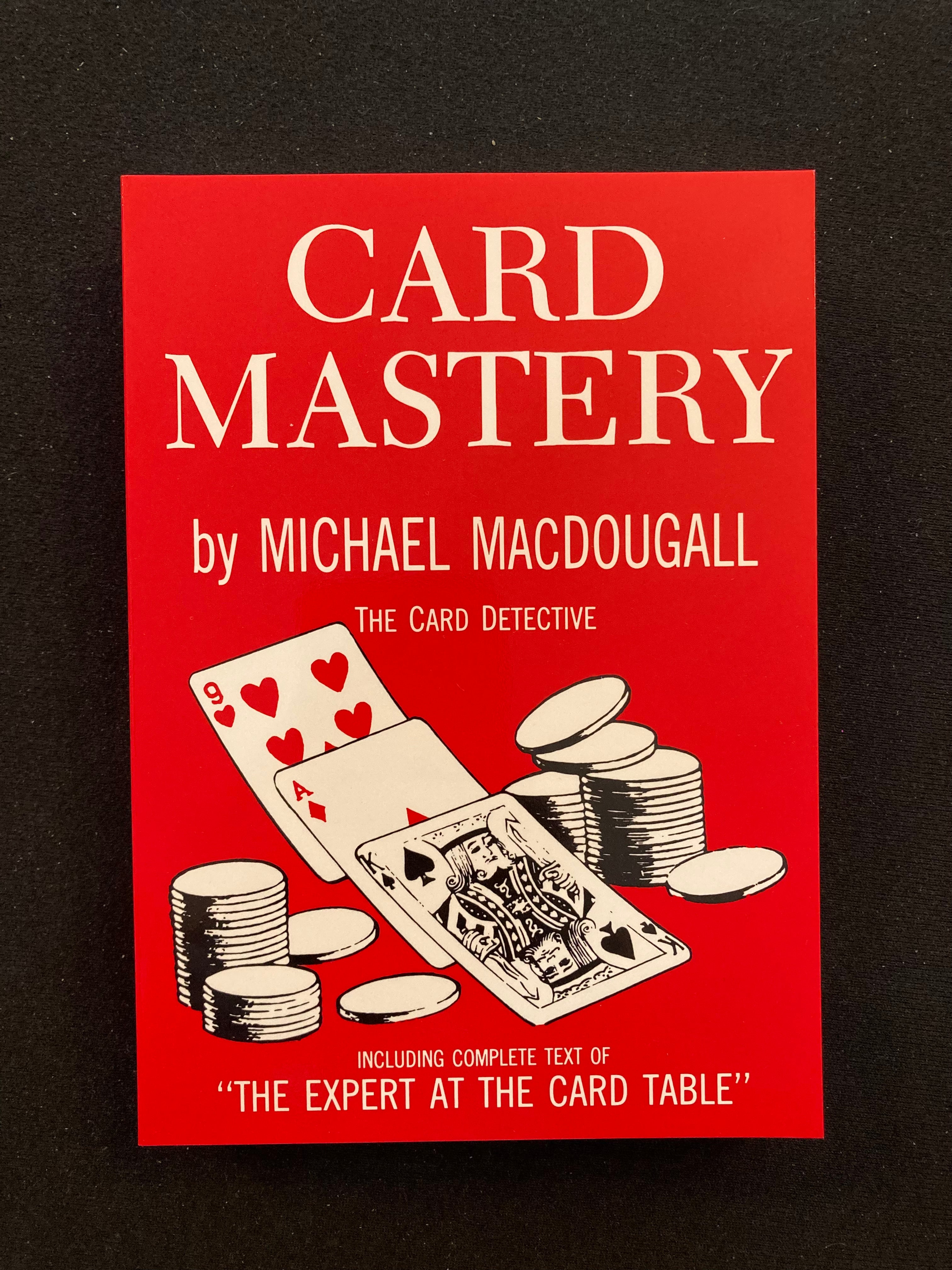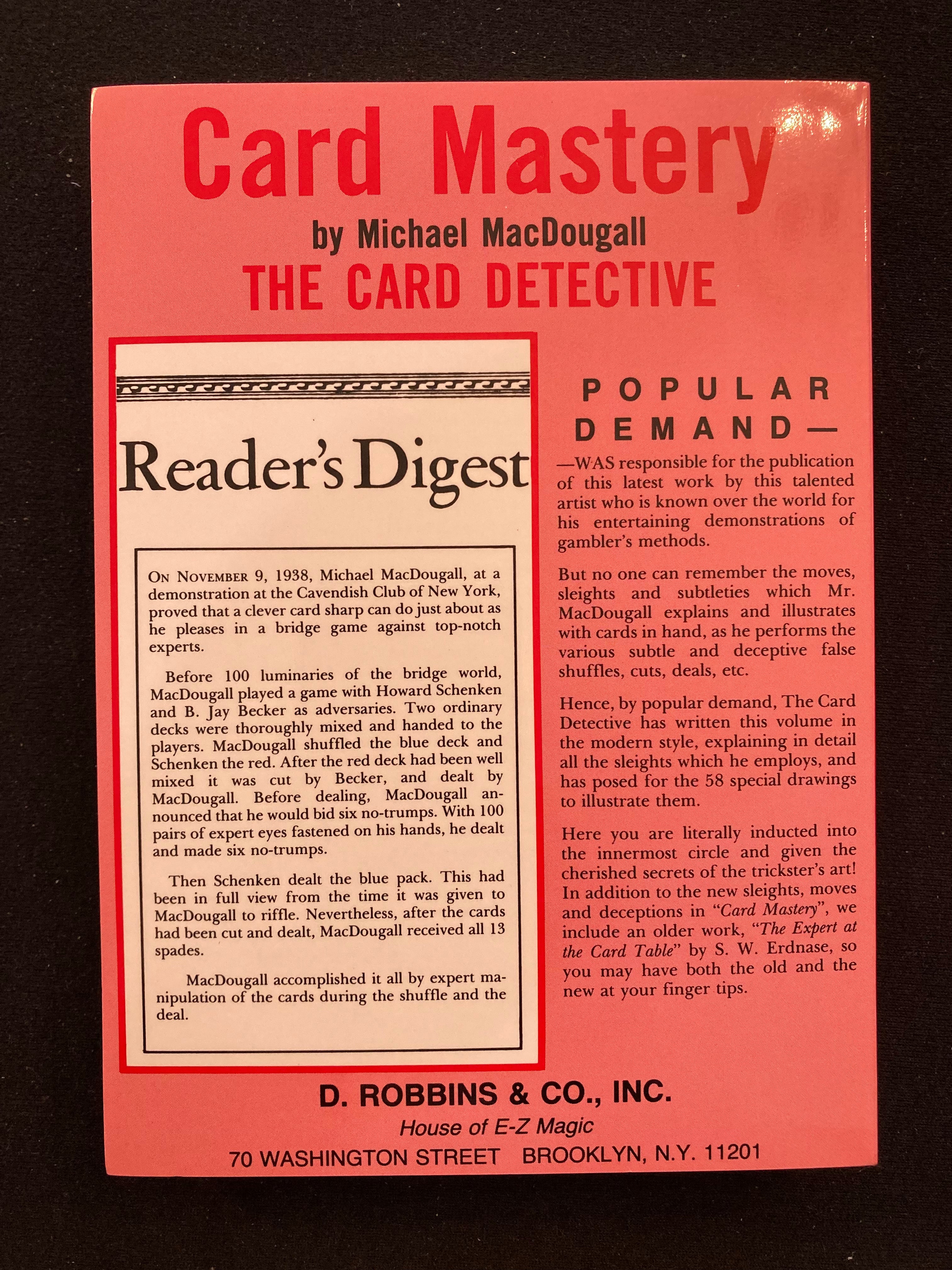Michael MacDougall explains new sleights, new methods of culling and stacking, new bottom steal, and more. Of interest to all card men, magicians and demonstrators. The second part of the book is S.W. Erdnase's seminal work on the art of sleight of hand with playing cards, The Expert at the Card Table.
Paul Fleming wrote:
To call this book Card Mastery is to adopt the attitude that it is fitting and proper for the tail to wag the dog. For nearly three-fourths of the book consists of a reprint of S. W. Erdnase's great work, The Expert at the Card Table, and only a trifle more than one-fourth is the contribution of Mr. MacDougall. An actual count of pages of the explanatory text shows that there are 196 pages of Erdnase as against 72 pages of MacDougall.
The MacDougall section is divided into eight short chapters, which deal with the sleights employed by card gamblers and also at times by card conjurers. Second- and bottom-dealing, glimpsing, culling and stacking, shifting and cutting, palming and stealing, and false shuffling are explained. Very few tricks are described - a close examination disclosed only five items which could be so classified. We find here little or nothing that is strikingly new or exceptionally well explained; though it is only fair to add that we have no special knowledge of gambling "artifices," and are thinking primarily in terms of sleights that are likely to prove particularly useful to magicians.
A good many things described by Mr. MacDougall appear also in the Erdnase section, and indeed are more adequately explained there. To cite a single example, two-handed bottom-dealing is given four pages of print and four illustrations by Erdnase, as against two pages and two drawings by Mr. MacDougall. The most outstanding difference we have noticed in the MacDougall material is the use of the riffle in place of the overhand shuffle - which we are told is no longer employed by gamblers for this purpose, though there is no reason why magicians should not use it - in the process of stocking (or stacking) cards. A two-handed pass and the Charlier pass are explained with the hands reversed - that is to say, as they would be executed by a left-handed person. There are other differences, of course, but they do not strike us as matters of great moment.
There is no correlation at all between the two sections of the book, and this seems to us to be a serious omission. If Mr. MacDougall had gone through Erdnase, page by page, indicating which sleights (if any) he considered behind the times, and suggesting better ones in their stead, he would have earned the gratitude of all students of card magic. A careful reading of the book leaves the present reviewer with no feeling that Erdnase is, in any sense, inferior or outdated, or that Mr. MacDougall's methods are notably better. We were prepared to learn of genuinely important developments in card conjuring but are driven to accept Al Baker's view, expressed some weeks ago, that The Expert at the Card Table is "just as modern now as the day it was published."
The advance publicity of Card Mastery led us to expect so much that we confess to feeling somewhat let down. Not only is the new material far less sensational than we were led to expect, but the physical appearance of the book is by no means imposing. Its pages are a half-inch shorter than those of the current paper-bound edition of The Expert at the Card Table. The Erdnase section, and presumably the whole volume, has been rather unevenly reproduced by the offset process on only reasonably good paper. The new drawings, of which there are 58 in all, are clear and satisfactory. The whole of the Erdnase text (including illustrations), we are happy to say, has been retained. The book is bound in a red cloth cover, on which the title is printed (front and spine) in black ink.















